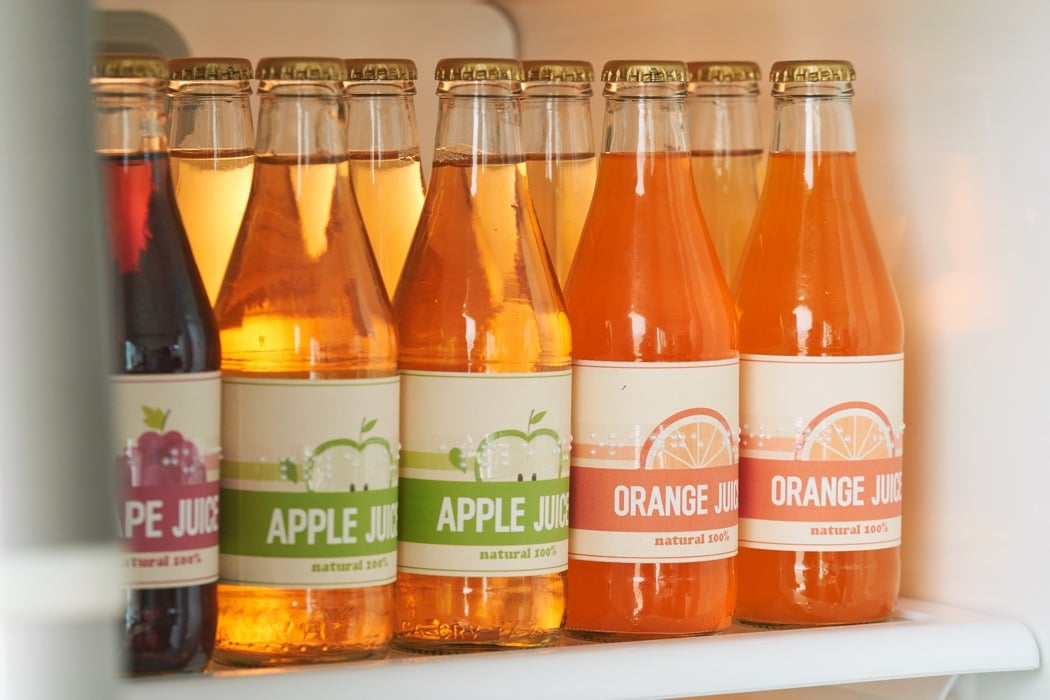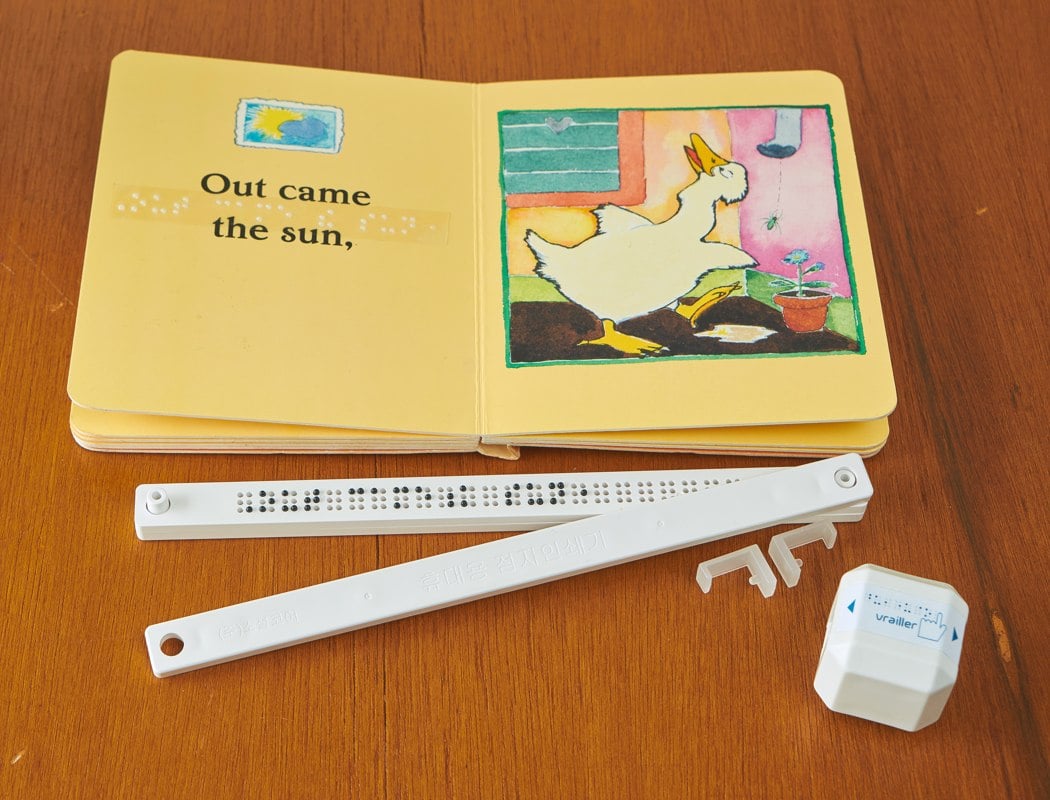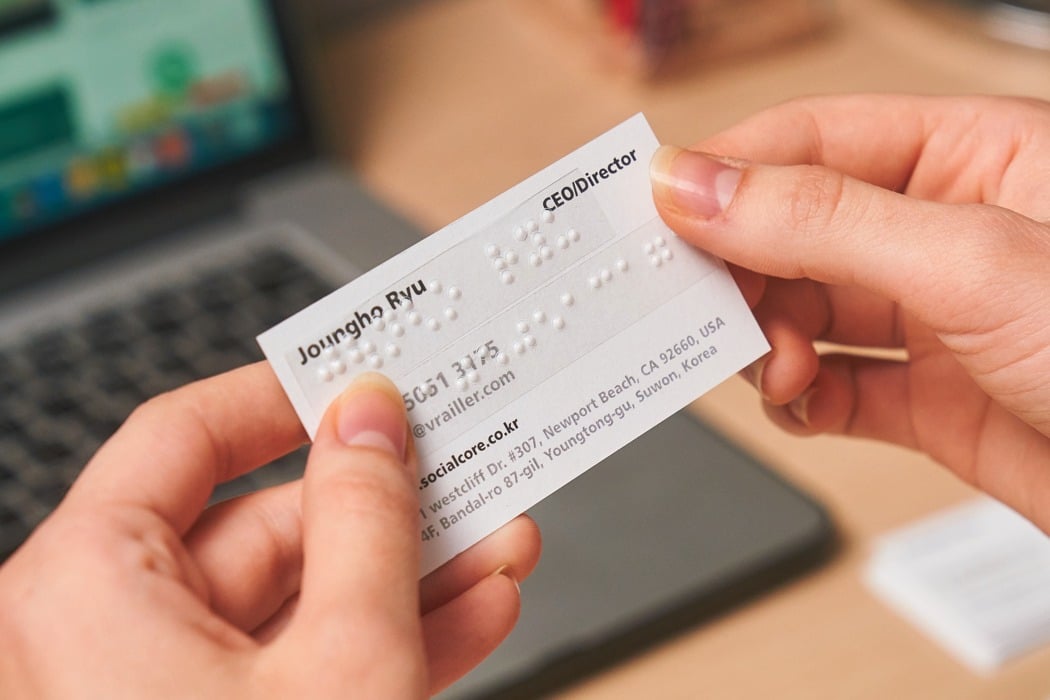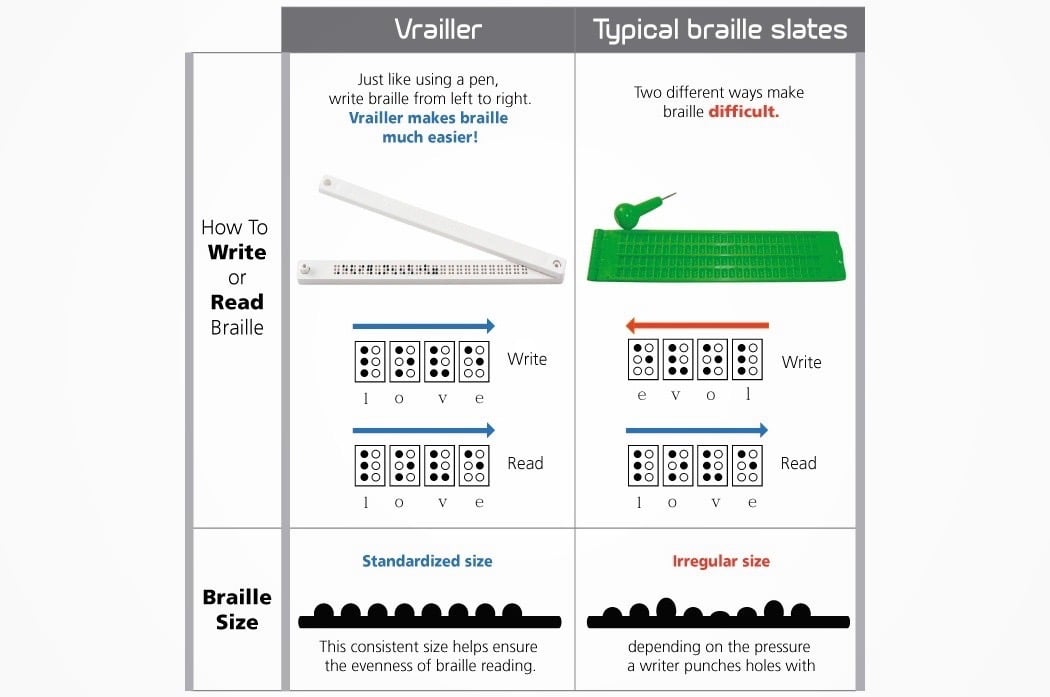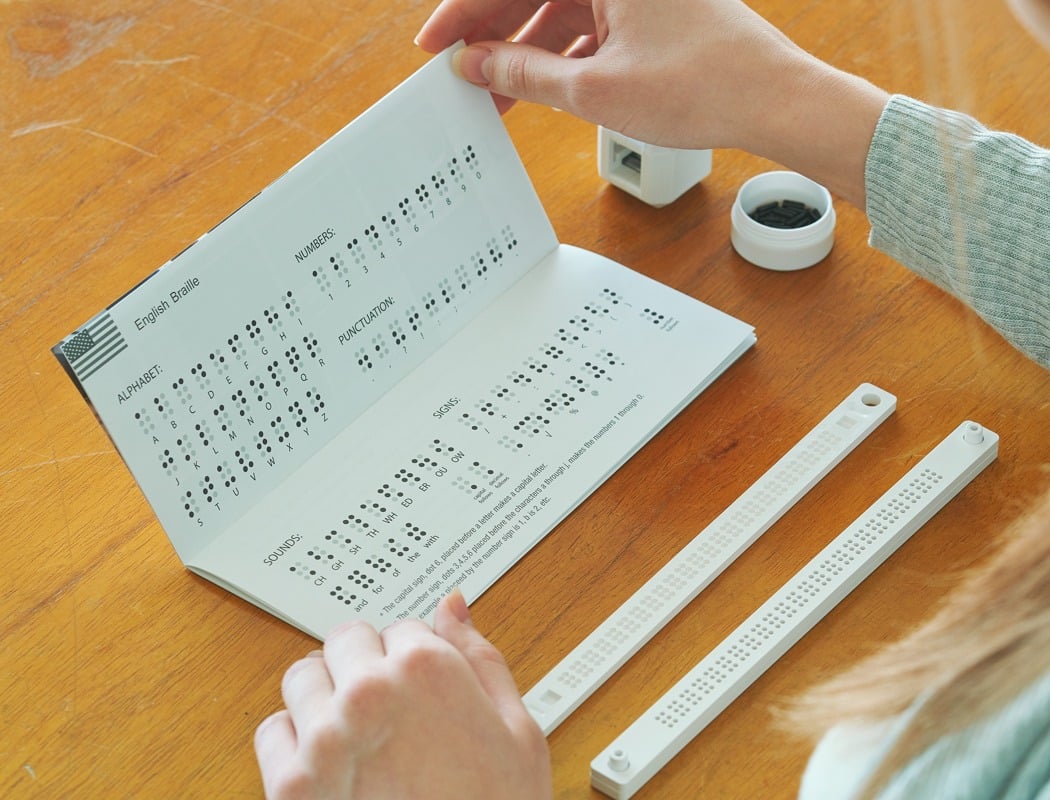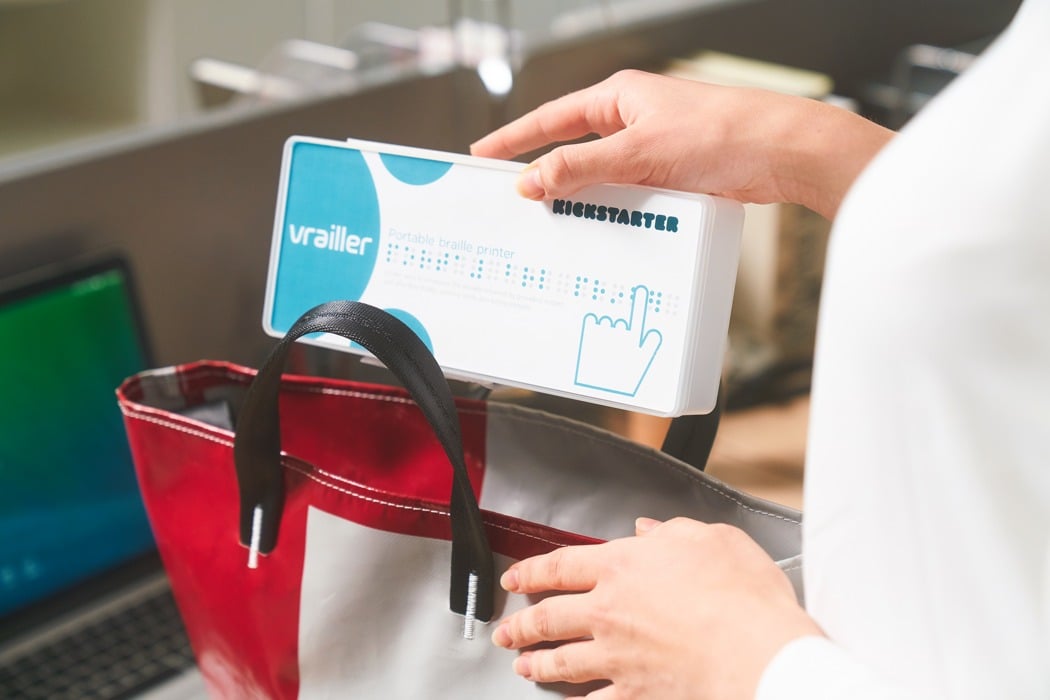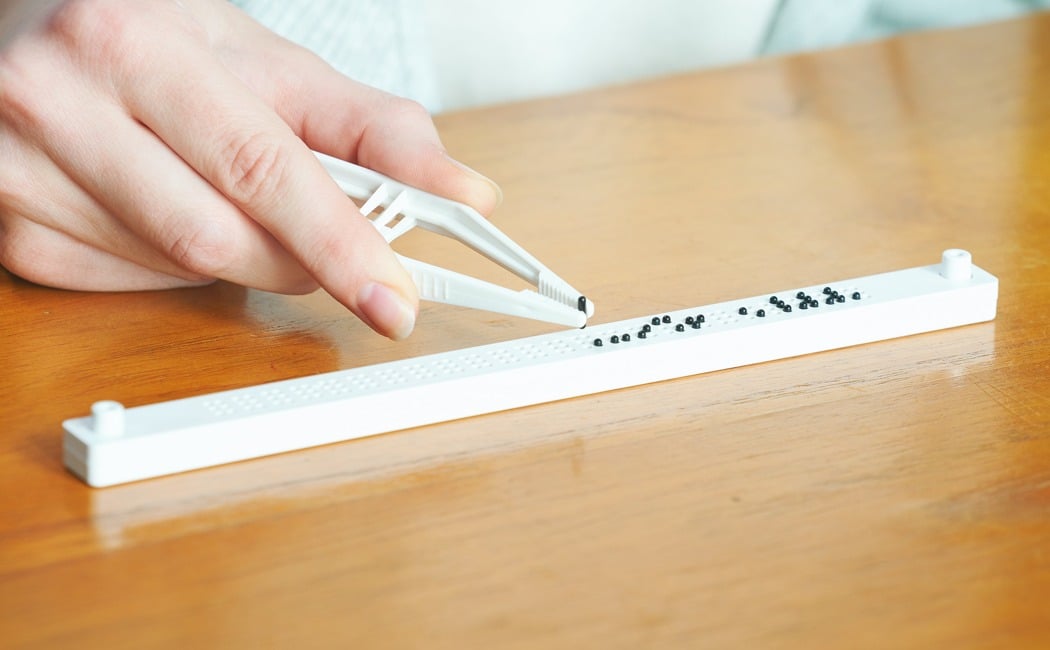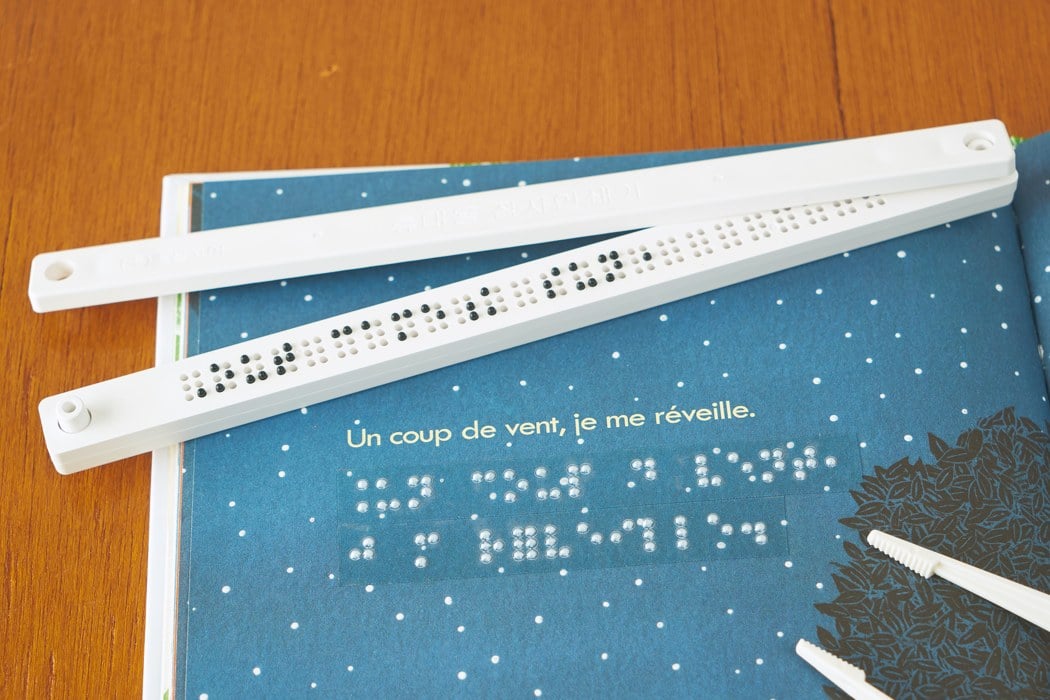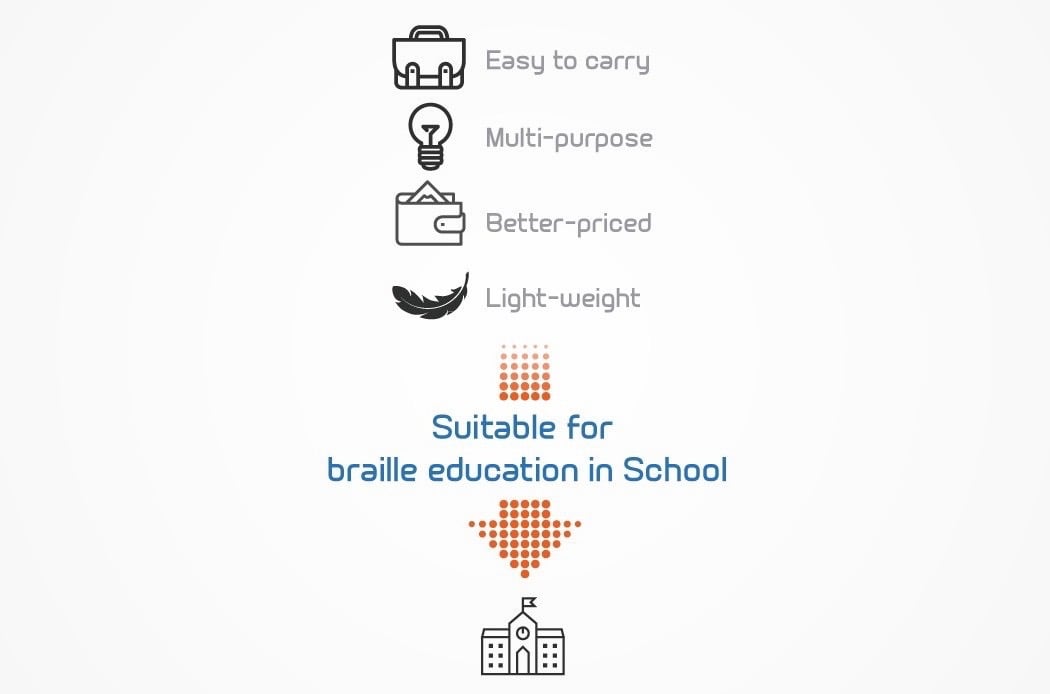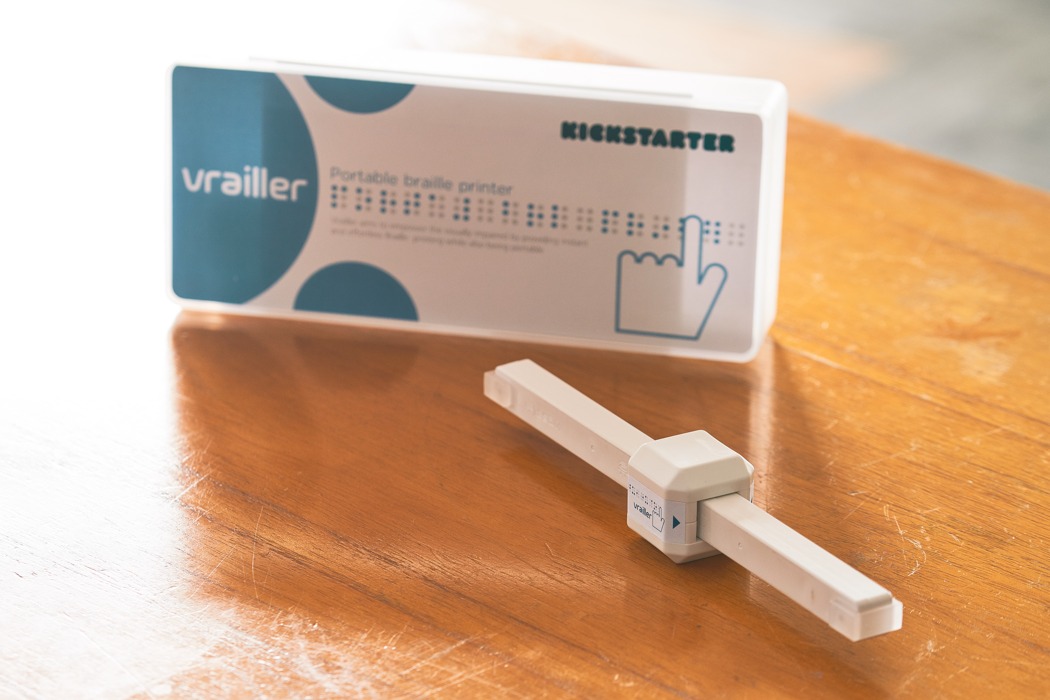Tag Archives: braille
Google Docs ‘live edits’ feature helps the visually impaired
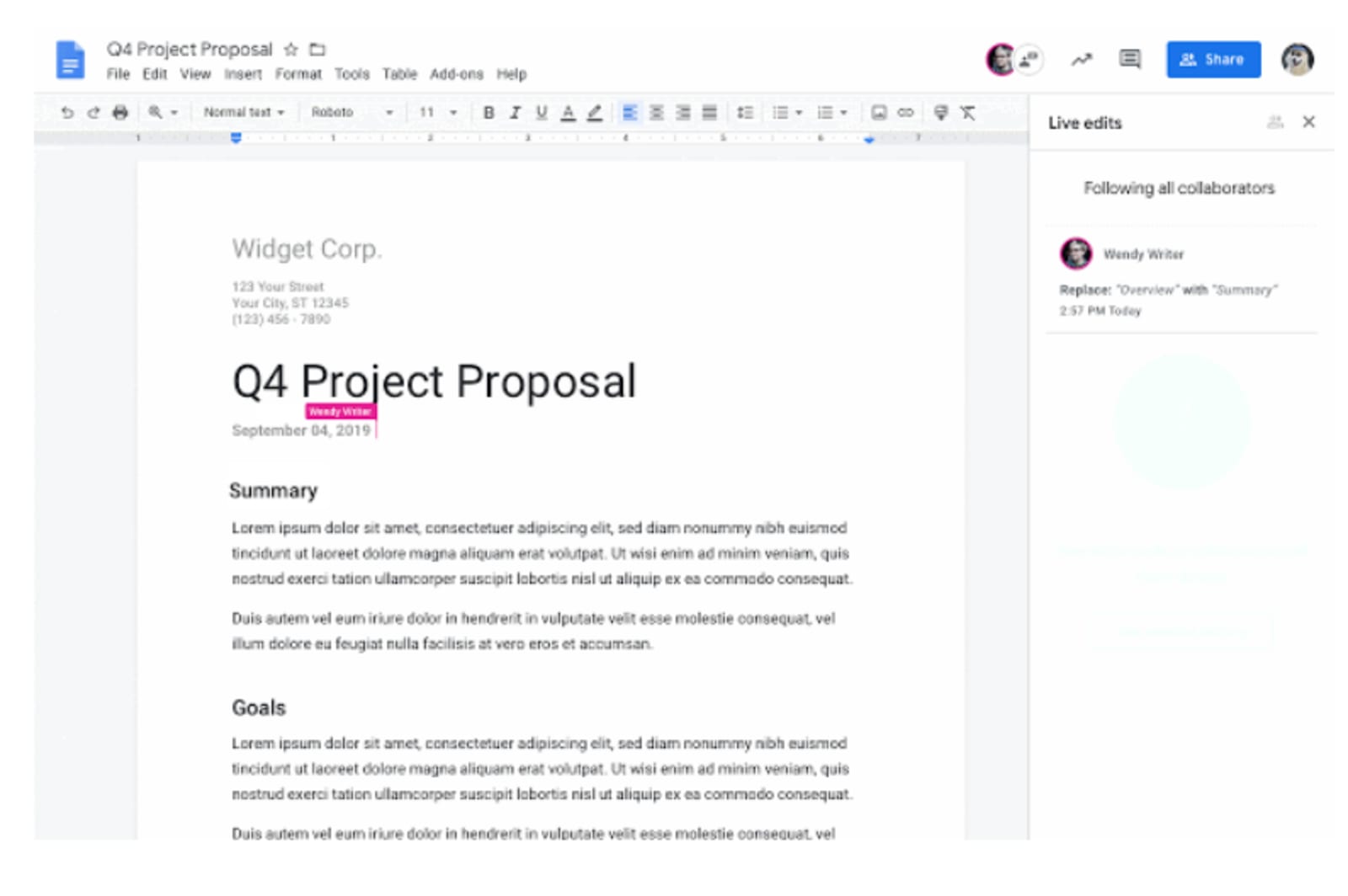 Google has launched a number of accessibility features this year, designed to make its products useable by everyone. Sound Amplifier, for example, makes conversations in loud places easier to hear, while Live Transcribe gives deaf and hard of hearing...
Google has launched a number of accessibility features this year, designed to make its products useable by everyone. Sound Amplifier, for example, makes conversations in loud places easier to hear, while Live Transcribe gives deaf and hard of hearing...
LEGO needs a Product Designer to design new play experiences!

LEGO is no longer a toy, it is a universe of its own. Starting from those humble little bricks, LEGO now spans multiple fantasy universes, with the LEGO movies giving us new creative inspirations to live up to! By joining LEGO, you will inspire and develop the creatives of tomorrow. You will be part of a truly international design team that thrives on developing the world’s best building and play experiences, creating exciting new LEGO play worlds, characters, bricks and models for millions of children across the globe.

LEGO is testing out Braille Bricks that will be compatible with all current standard blocks, and the fact that it comes with text printed below for people learning the language, the Braille Bricks will bring “a whole new and playful approach to get blind and visually impaired children interested in learning Braille, enabling them to develop a breadth of skills needed to thrive and succeed in a fast-paced world”.
The Opportunity
Are you passionate about toys?
Would you like to explore the endless world of children’s imagination and creativity with LEGO® Bricks? Do you want to shape the play experiences of children all over the world? Well, here is your chance!
Turn ideas into toys
We are looking for new talented designers to sketch, prototype, develop and build new play experiences and concepts. As a LEGO® designer you will create the world’s best building and play experiences for boys and girls through brands like LEGO Super Heroes, LEGO Disney, LEGO City, LEGO Creator, LEGO Technic, LEGO Friends and DUPLO.

Requirements
You will be part of a dedicated and creative team, where you will:
– Work with the whole design process, ranging from research, co-creation over ideation, sketching of concepts and building real models from LEGO® bricks
– Create new stories, themes, and concepts, and mature them into new play experiences and products
– Collaborate closely with a cross-functional team in a creative, international and open-minded environment.
Passionate about the impact of play
In a culture where collaboration and creativity are key, you will work closely in teams to brainstorm, create and design products that delight and inspire children globally. You will join a large international design team in Billund (DENMARK), counting approximately 300 designers from around the world, who are all passionate about the impact of play.

Responsibilities
You are passionate about creating fun play experiences for kids
To be a successful designer at LEGO®, you enjoy working in a team, you want to learn, and you know how to create playful concepts. In addition, you:
– Have a formal education in industrial design, product design, toy design, fashion design or other creative education
– Are fluent in spoken and written English
– Are passionate about design and toys, have a high personal drive and enjoy taking initiative
– Have an innovative mind, which – combined with the playful approach of your inner child – enables you to create ideas and concepts for the world’s most critical audience
– Have storytelling potential – imagining play possibilities for the toys you design
– Have an aesthetic talent, a firm grasp of the design process, strong skills in sketching and key creative software programs e.g. Adobe
– Have an ability to manage colors and set color schemes
– Ideally, know the brick and can create new toy concepts by using the existing element platform in new and innovative ways, but it is not a must.
– Have strong communication skills to pitch concept ideas – both verbally and visually
– Have leadership skills and capabilities to drive design processes
 How to Apply
How to Apply
We receive hundreds of applications therefore, you MUST UPLOAD a focused (and relevant to LEGO) snapshot of your portfolio, a motivation letter, and a current CV for consideration. Please note, the maximum upload size is 2 MB per file. Applications without a portfolio will not be taken into consideration. If you need more information in order to apply, please send a mail to design.management@LEGO.com.
Applications will be screened on an on-going basis, but due to summer vacation please expect a longer response time – this posting will be online for UP TO 10 weeks.
Location
Billund, Denmark
Check out all the latest design openings on Yanko Design Job Board

Microsoft envisions an Xbox controller with Braille
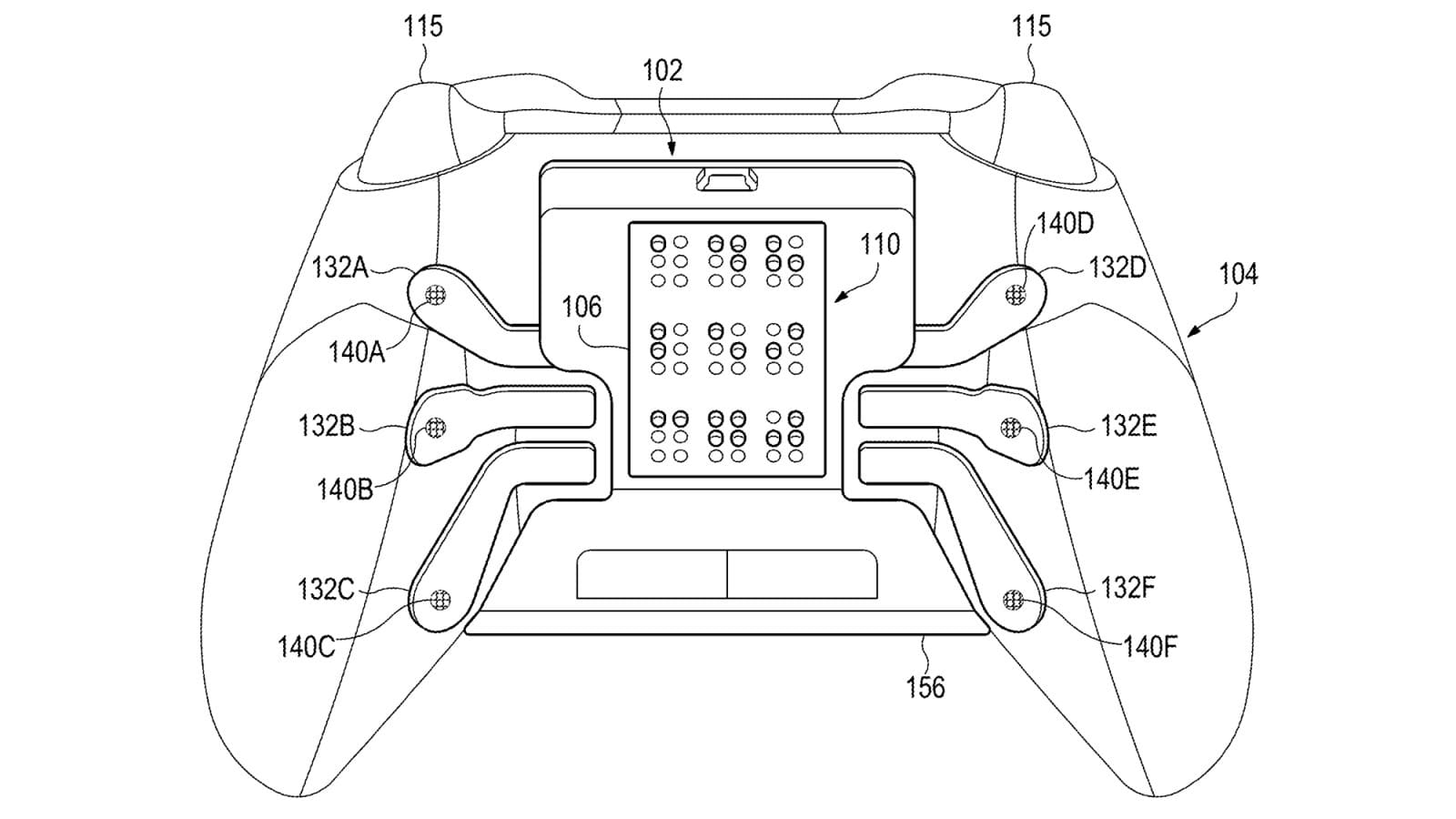 Microsoft is clearly invested in adaptive gaming controllers. Its Xbox Adaptive Controller for Xbox One and PC was the star of its latest Super Bowl ad. The company spent more than a year designing accessible packaging, and it recently teamed up with...
Microsoft is clearly invested in adaptive gaming controllers. Its Xbox Adaptive Controller for Xbox One and PC was the star of its latest Super Bowl ad. The company spent more than a year designing accessible packaging, and it recently teamed up with...
Microsoft Works on Xbox Braille Controller for Blind Gamers
Microsoft Works on Xbox Braille Controller for Blind Gamers
These LEGO bricks are designed to teach kids Braille
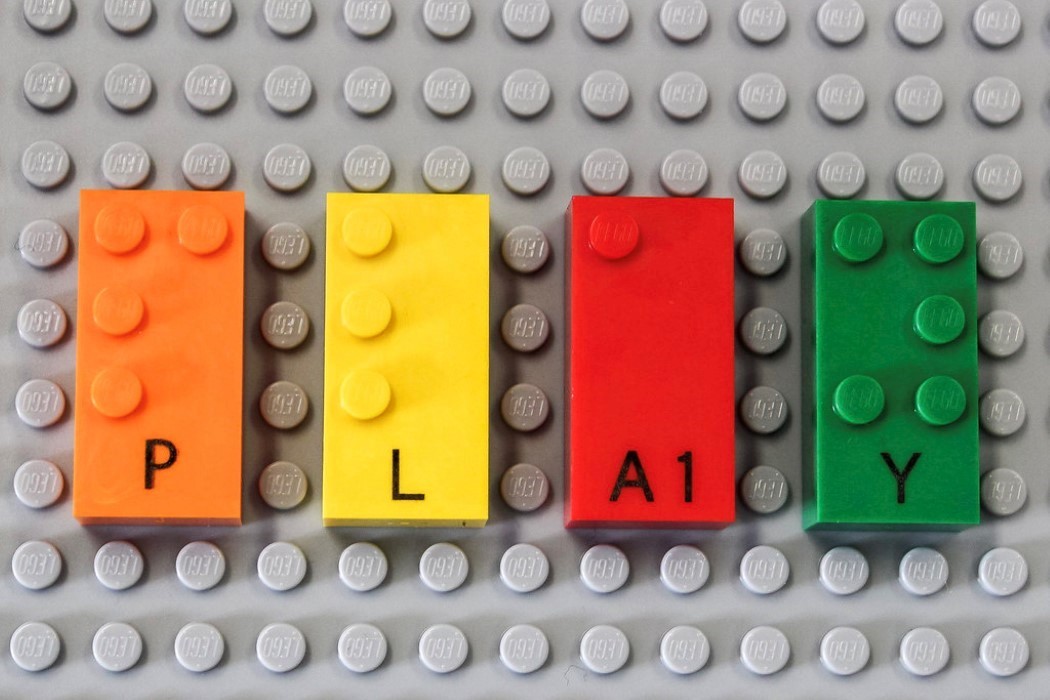
LEGO blocks have a timeless appeal. With their ability to form complex structures that only the mind can think of, the blocks help teach children the basics of construction, symmetry, form, and even color. They now also teach children Braille.
Its bumped upper texture provides quite literally the most obvious canvas for the braille language, allowing kids to, block by block, build sentences, but at the same time also read along as they go, both by running their fingers across the specially bumped blocks as well as using the printed text below each set of bumps.
The concept behind LEGO Braille Bricks was proposed by multiple international organizations for the blind, and was eventually spearheaded by LEGO Group’s Senior Art Director, Morten Bonde, who suffers from a genetic eye disorder that is gradually turning him blind. “With thousands of audiobooks and computer programs now available, fewer kids are learning to read Braille.” The Braille blocks help kids understand and learn the language enabling them to live in a more inclusive world, while also promoting brain development and independence.
The LEGO Braille Bricks will be compatible with all current standard blocks, and the fact that it comes with text printed below for people learning the language, the Braille Bricks will bring “a whole new and playful approach to get blind and visually impaired children interested in learning Braille, enabling them to develop a breadth of skills needed to thrive and succeed in a fast-paced world”.
The Braille Bricks are currently being tested in Danish, Norwegian, English and Portuguese, while German, Spanish and French will be tested in the third quarter of 2019. The final LEGO Braille Bricks kit is expected to launch in 2020 and will be distributed free of charge to select institutions through participating partner networks in the markets.
Designer: LEGO
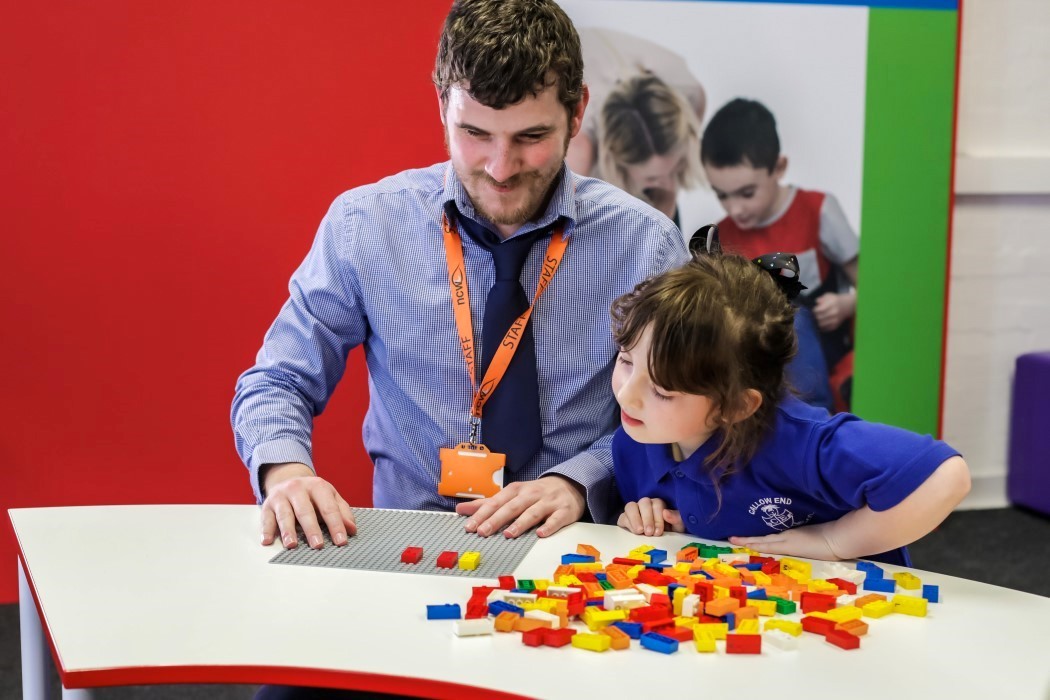
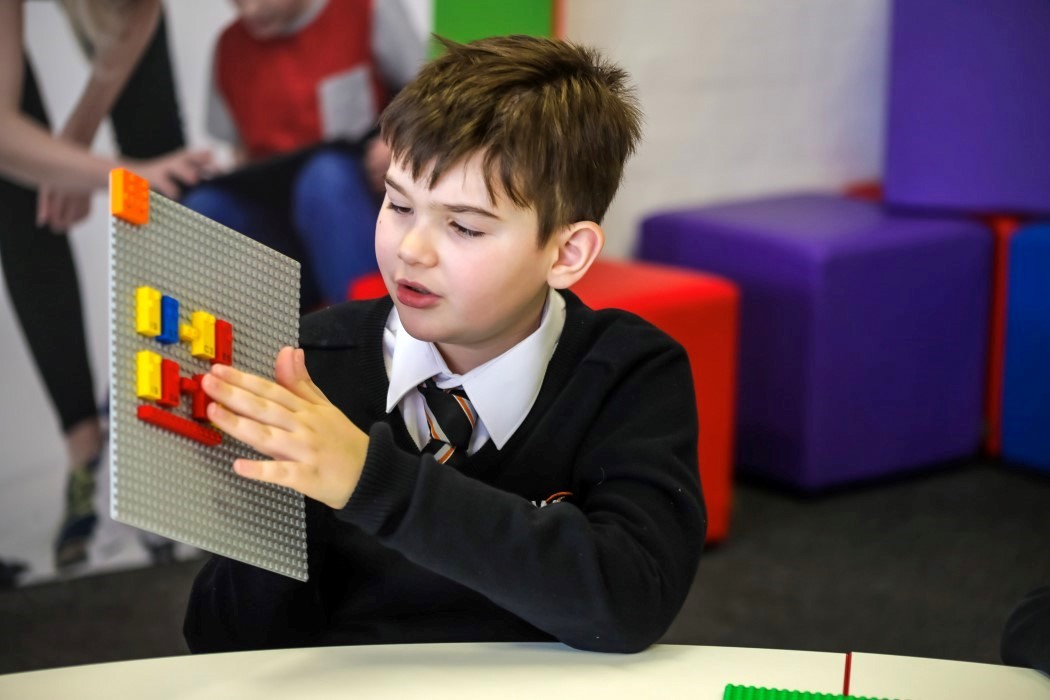
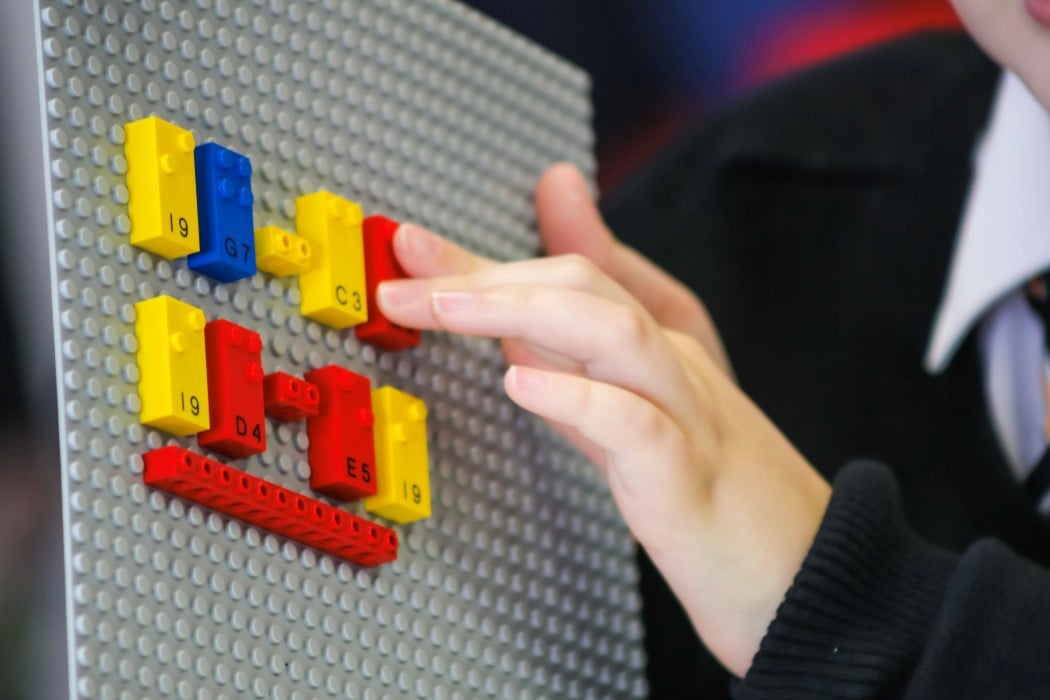
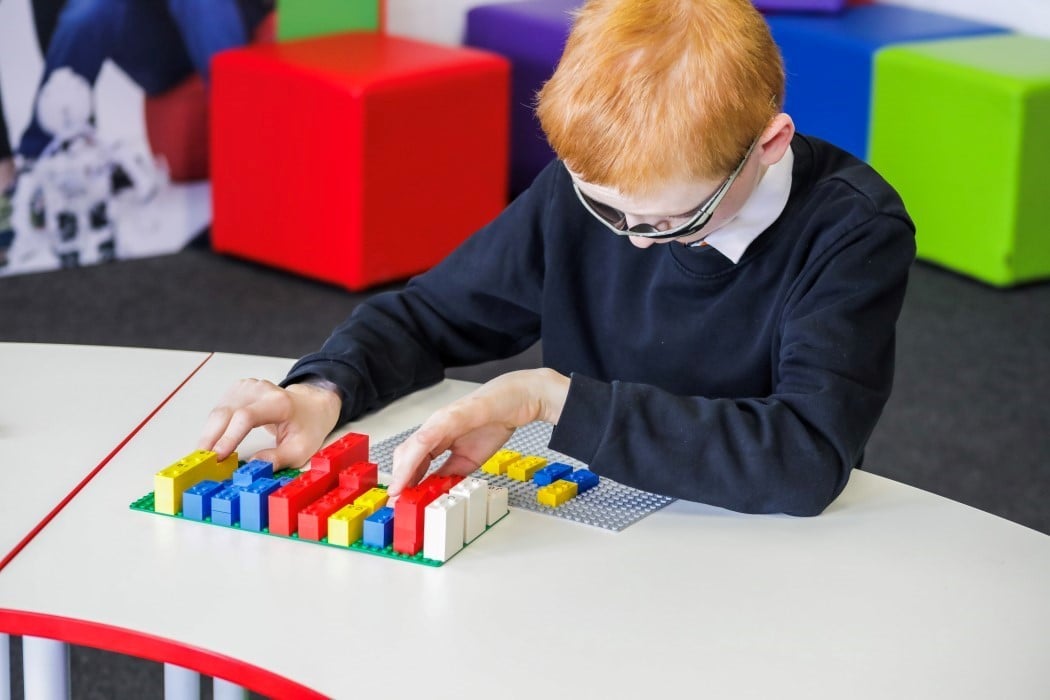
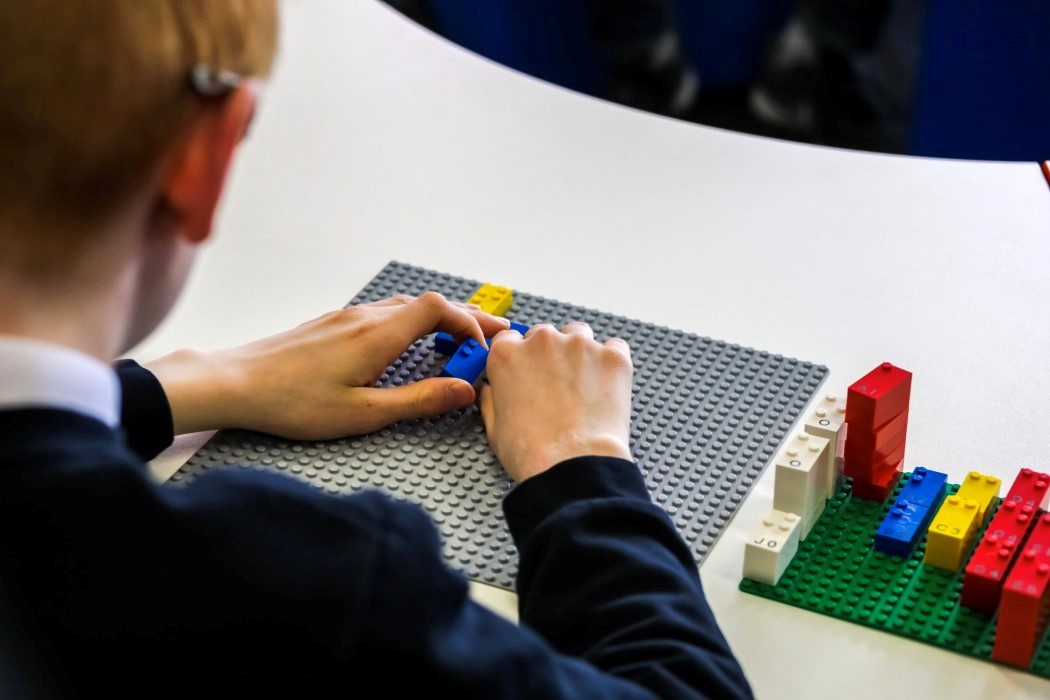
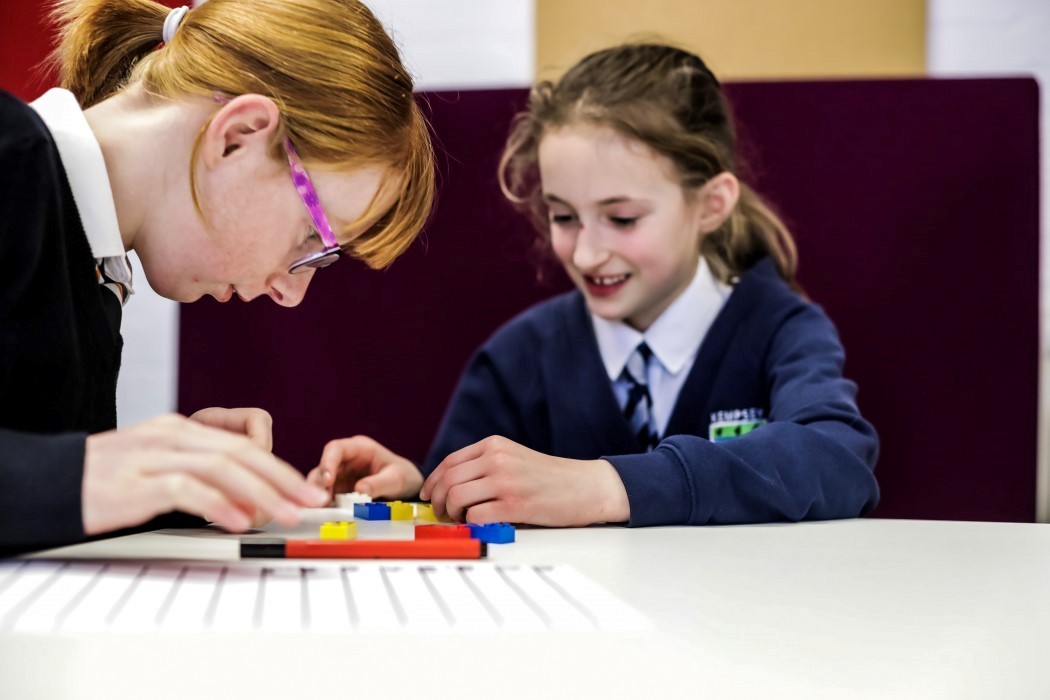
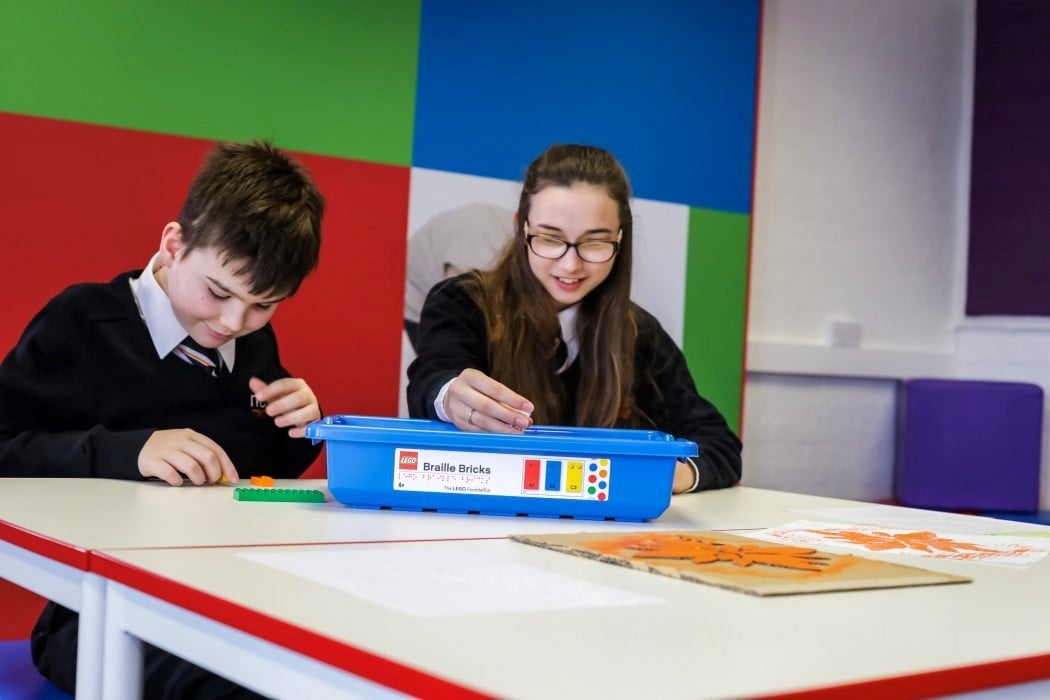
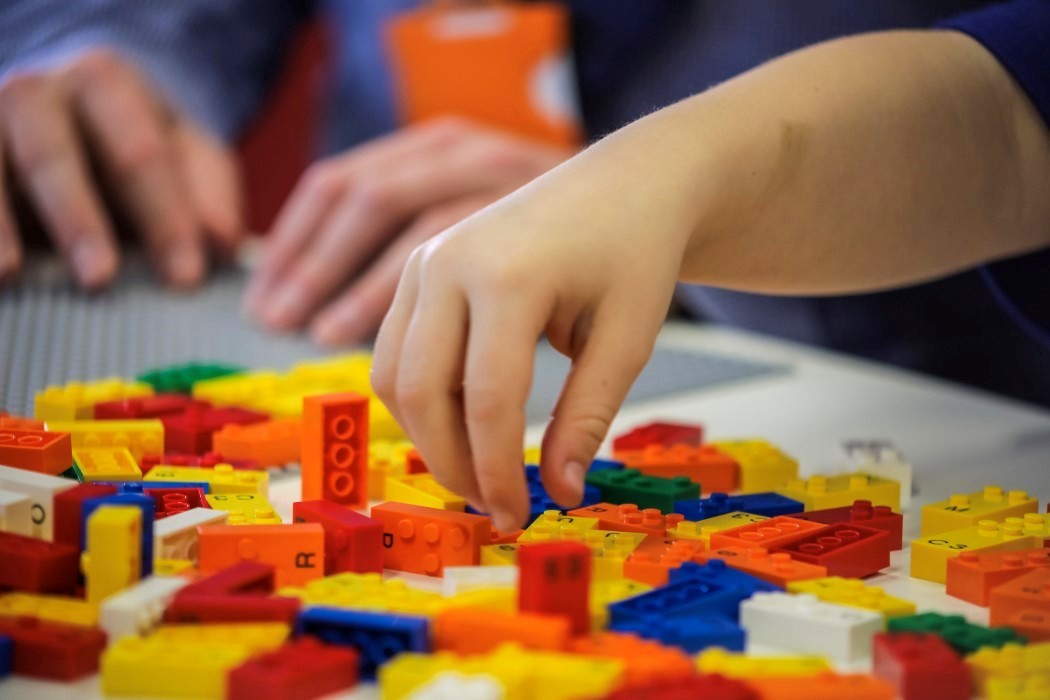
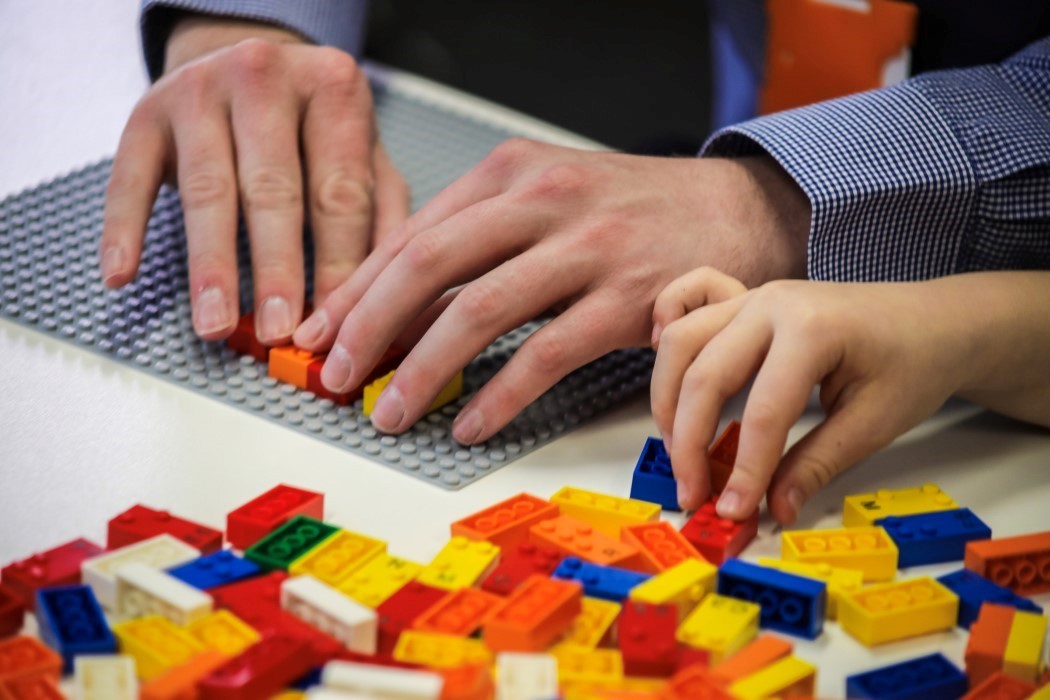
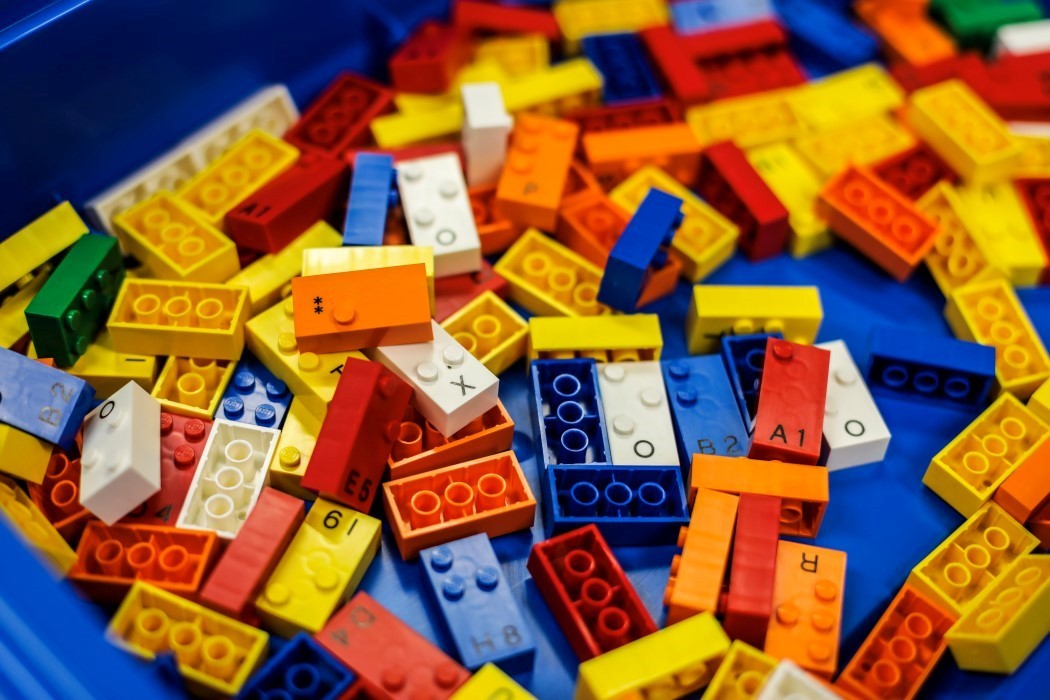
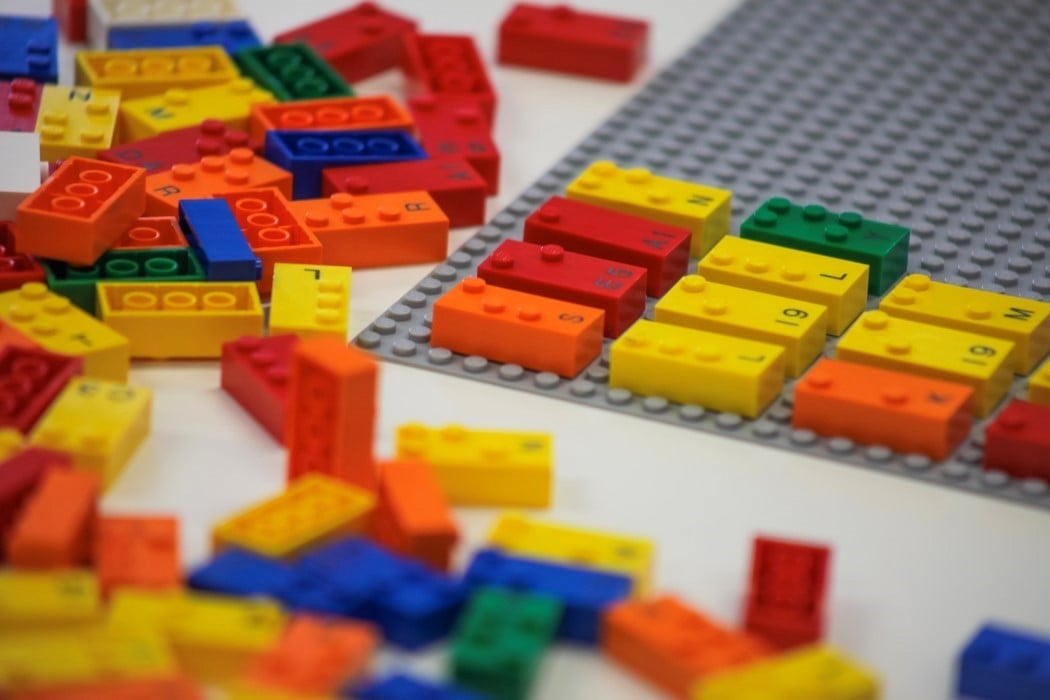
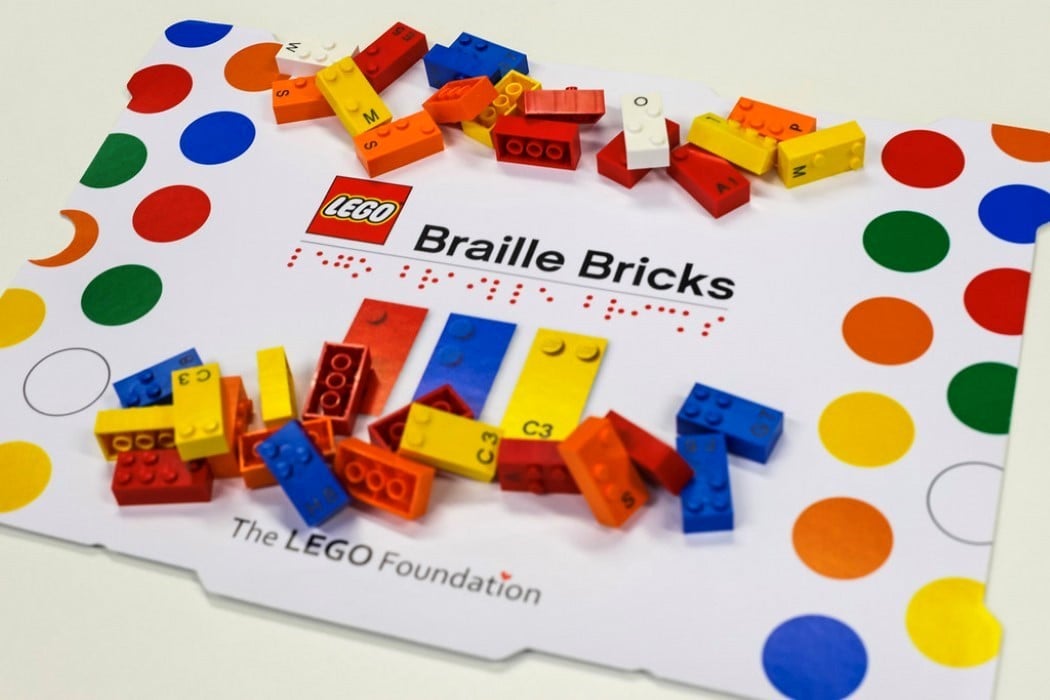
The Braille-book brings computing one step closer to inclusiveness
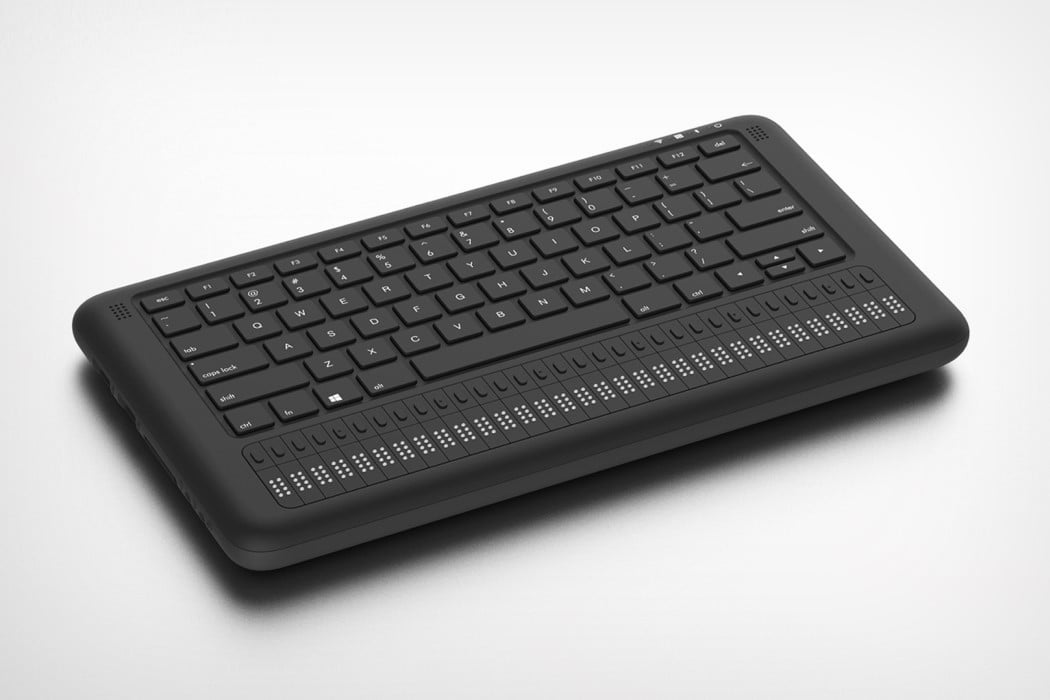
The minute I say the words All-In-One PC, what do you think of? A screen, right? An iMac-esque display that houses a CPU within it, and all you need is a keyboard and a mouse. The caveat with that setup, however, is that a display is literally the last thing a visually impaired person needs. The Braille-book, designed around this unique yet existing problem, merely shifts all the electronics into a keyboard. The Braille-book is an all-in-one PC that’s designed to be housed within the keyboard, and can easily be hooked to a monitor and a mouse.
The monitor, keyboard, and mouse are completely essential to the computing experience, and the Braille-book just simply changes which device takes the center-stage. The keyboard comes with ports that let you hook all the peripherals you need to it, and even packs a dynamic braille display along its base, with keys to match. Since the visually impaired constantly need to touch and feel their way around a keyboard surface to know which keys they have their fingers on, the Braille-book packs an easy alternative. The braille display at the base shifts and changes based on your typing needs, switching between alphabetical to numeric, and above it lie a row of keys that correspond to each braille unit. The user runs their finger along the dynamic braille display and when they find the right character, they press the key above it. The Braille-book even packs its own in-built speakers that improve accessibility by providing audio feedback to the user as they use the computer. Alternatively, right beside the HDMI port (for a display, if you do need one) is a headphone jack that lets you hook up headphones to the all-in-one PC for a more personal, private browsing experience. Computers, for the longest time, have developed more around the visual sense than any other sense. The Braille-book corrects that imbalance.
Designer: Youngdo Choi
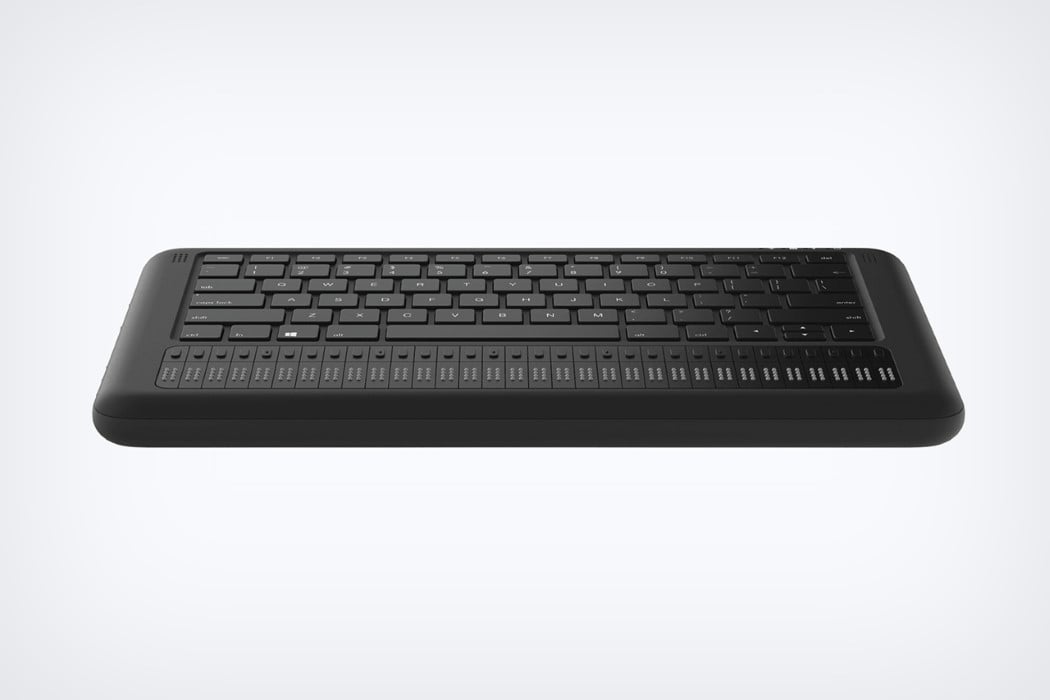
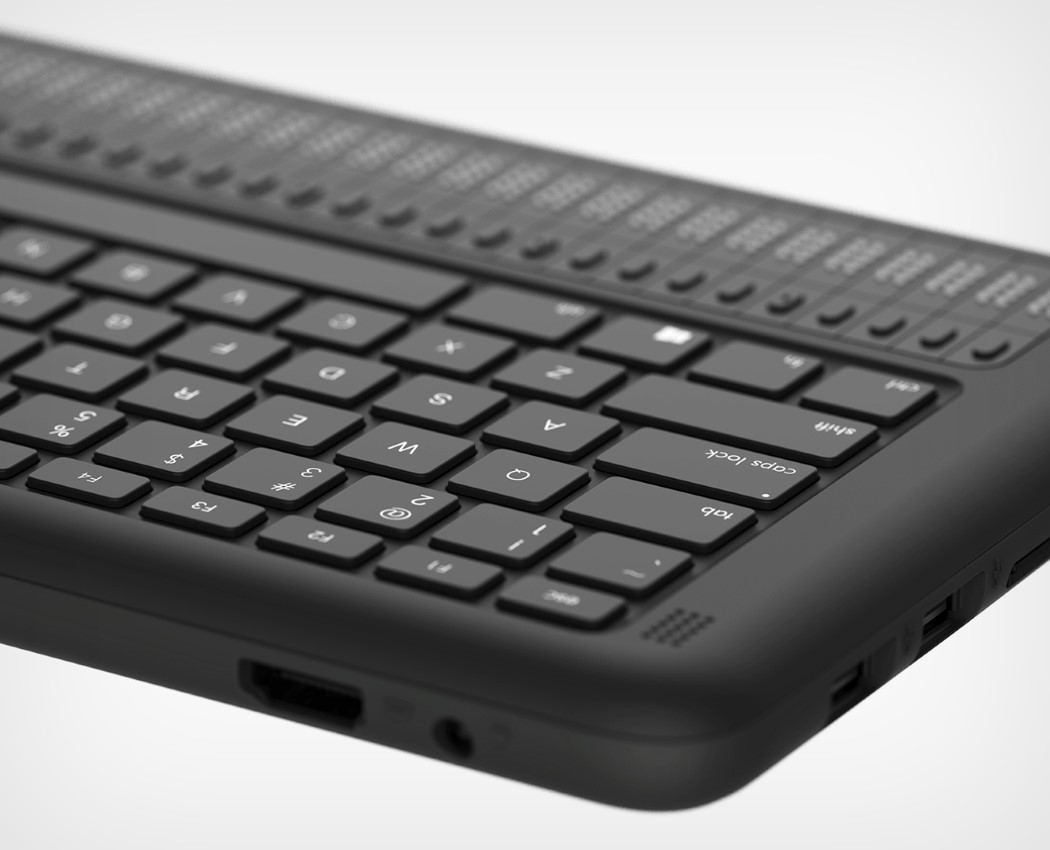
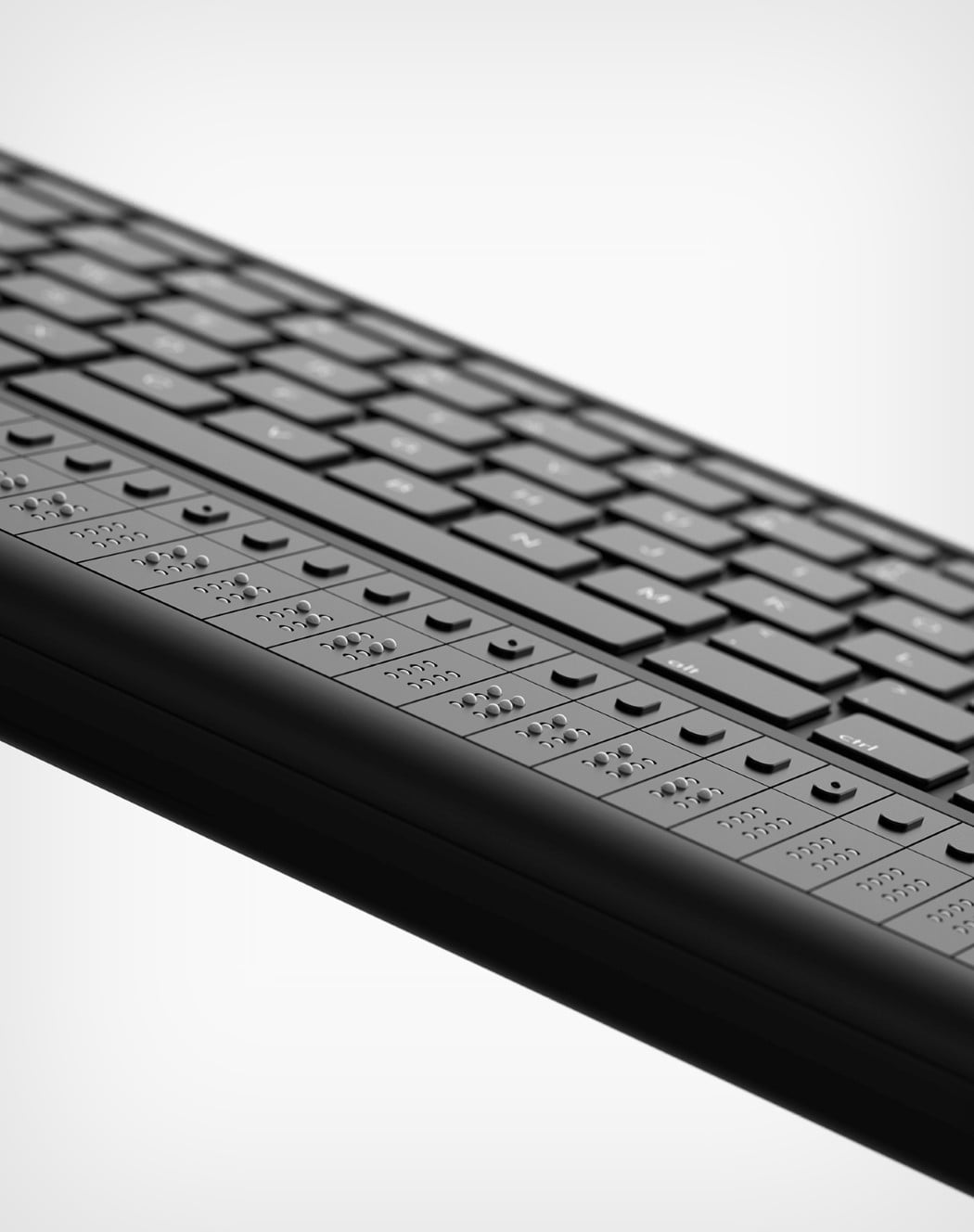
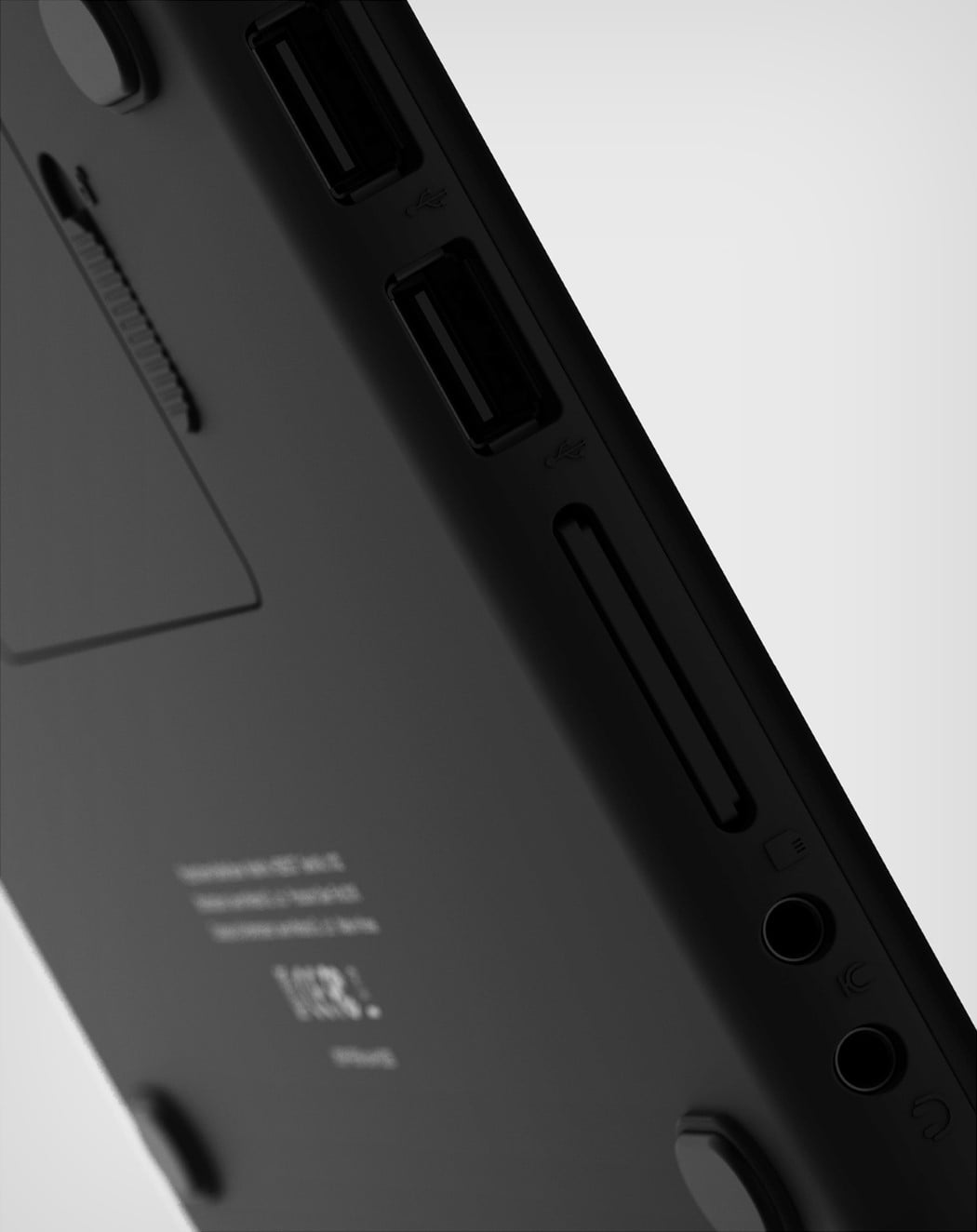
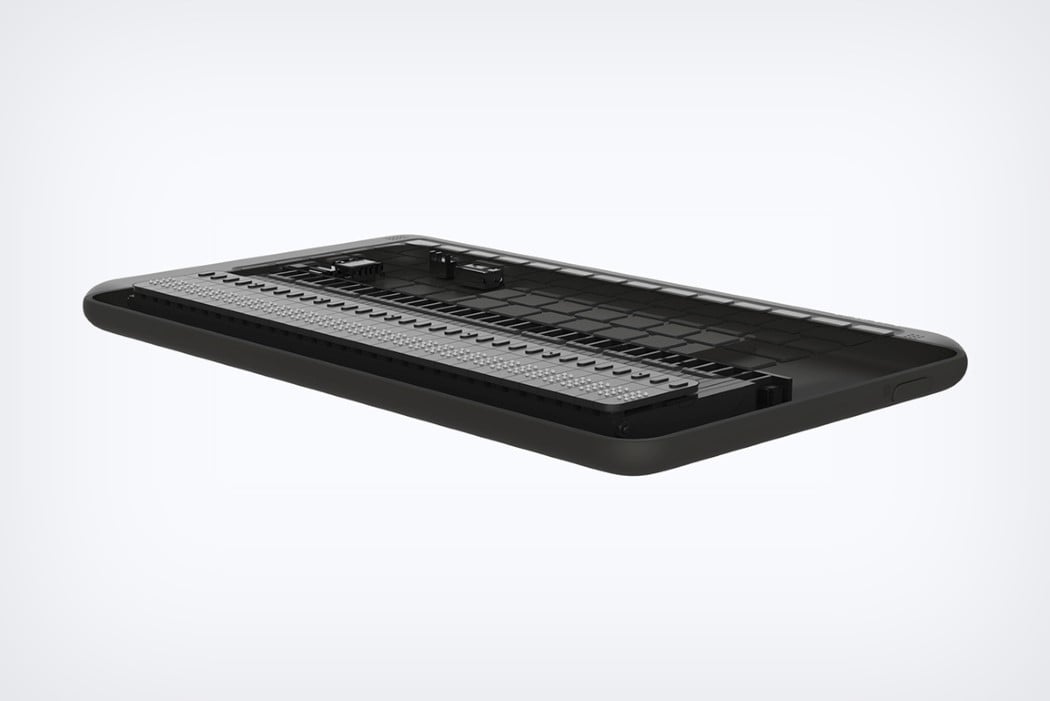
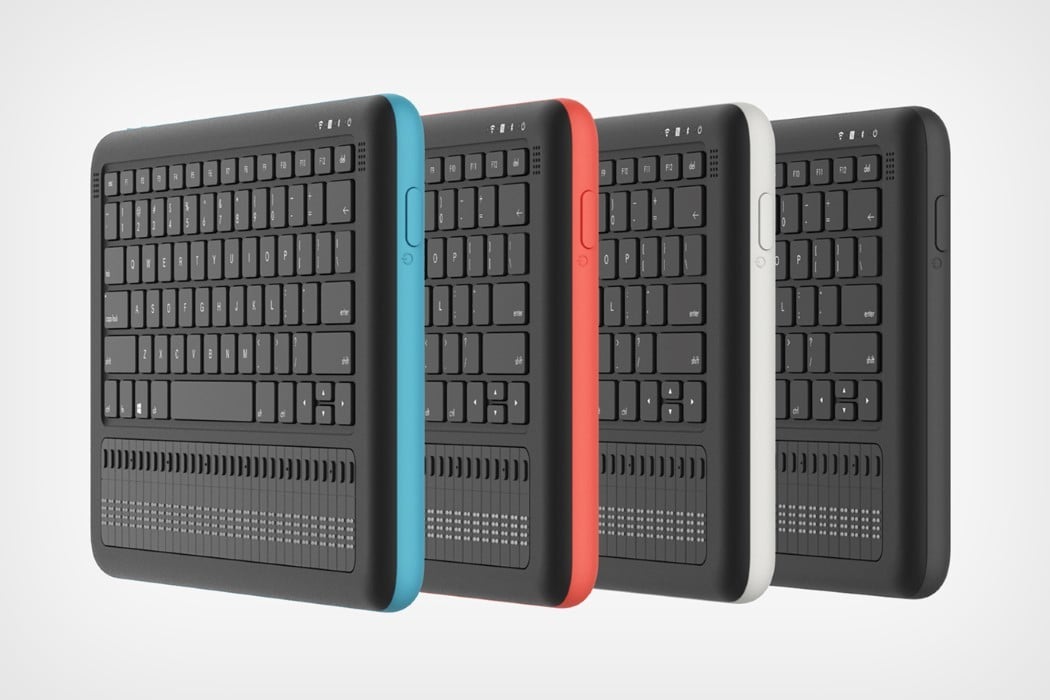
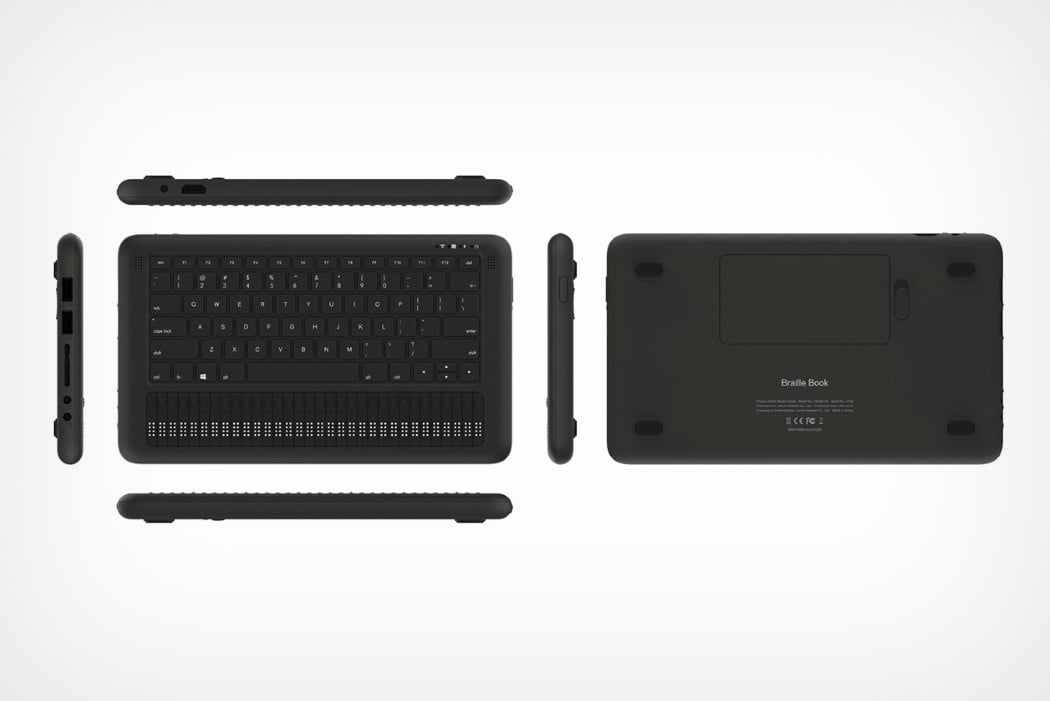
Braille Gaming Dice: Feel the Pips
If you’ve ever wondered how blind people play tabletop and RPG games, here’s your answer. Braille dice. A lack of sight doesn’t have to keep you from enjoying a good game of D & D. These cool dice were created by Jack Berberette as part of his Dots RPG project, which is all about making tabletop gaming more inclusive to the blind.

You can find the 3-D printing shapefiles for free HERE, or you can purchase finished dice several colors and sides from his Shapeways shop. Dice collectors will want to get their hands on these too. They come in all of the dice varieties that you need to play your games: D6, D10, D20 and everything in-between.

They look pretty sci-fi to me. One thing’s for sure, you won’t be able to fool your blind friends anymore by telling them they rolled a different number. You’re terrible for doing that by the way. Now they are going to wonder why their game is getting so much better, and it was all your fault. Jack really did a good job on these. They are very easy for blind gamers to use, and with a bit of learning the rest of us can figure it out too.

[via Boing Boing via Geekologie]
The World’s Easiest and Most Consumer-friendly Braille Printing Kit
Design, as an industry, is slowly taking accessibility more seriously. Whether it’s Microsoft releasing a redesigned XBox controller for the differently abled, or whether it’s Apple putting an ECG on their watches to allow it to be a wearable everyone can use no matter the age or walk-of-life, inclusivity, or design-for-all is something that’s really worth pursuing and appreciating.
However, complete inclusivity has always been difficult to achieve for the visually disabled. Given that eyes are the most dominant sense of all, its absence can often inhibit the way we consume information, data, and content, and designing for visual disability can oftentimes be a big challenge, and Braille still isn’t completely available everywhere. That’s notably because Braille printers are very specialized machines, and cost an absolute fortune.
The Vrailler makes a point that braille printers don’t need to be specialized, hard-to-use, inaccessible, and expensive. Vrailler’s braille printer is easy-to-use, small (it can fit into your pocket), and more importantly, affordable (imagine a personal braille printer, but $1200 cheaper). It uses two perforated slates, a third upper slate, and a set of pins that you drop into the base-slate to create indentations. When you press the upper slate and middle slate onto the base slate (with your medium sandwiched in between the bottom two slates), the indentations translate onto the paper/film, giving you printed braille. These can be used to create name-tags, labels, or even accessible business cards. You can make multiple prints on the Vrailler once you set the formation of pins in, and the Vrailler prints braille out for you without using any electricity or battery power.
The Vrailler can be used to print multiple languages in Braille, giving it accessibility on a much larger scale, and can be easily carried around and operated by pretty much anyone (it comes with a Braille Guide too) allowing you to quickly and effectively print out pieces of text in Braille, making information of any sort readable to all, whether it’s on medicine labels, or business cards, menu cards, or even in books. In its effort to make braille more accessible, the Vrailler is perfect for schools, allowing visually disabled children to have access to information, as well as in offices, to make them much more inclusive to all (just how ramps make mobility easier). Its small size means it can be carried around anywhere, allowing you to make small changes as you go, and make the world a much better place for people who need it!
Designer: Vrailler
Click here to Buy Now: $35 $50 (30% off).
Vrailler provides portable, affordable and effortless Braille printing for everyone.
Key features.
Easy to learn.
Affordable price.
Extremely portable.
Multiple printing. Once the pins are set, you can print multiple copies.
With just 6 Braille Points you can write and print any language in Braille form which makes it easy to use for just about anyone.
Above: In French.
Brailler education through Vrailler.
Vrailler is more cost-effective for braille education in school.
How it works.
User feedback.
Click here to Buy Now: $35 $50 (30% off).



